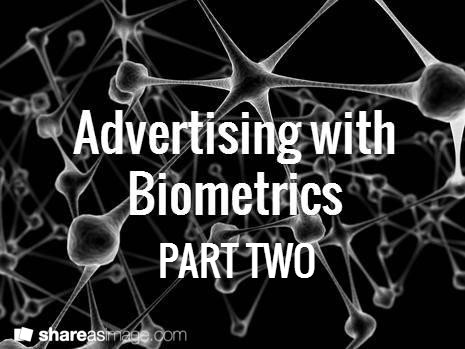
This is a continuation of my previous post which investigated the biometric impact of online ads/content when targeted to be personally relevant. If you didn’t read the last one, let’s bring you up to speed; Basically, the research clearly demonstrates that a greater level of cognition and engagement occurs when ads are personally relevancy to the recipient. That’s very interesting, but what we don’t know yet is the impact of context – so let’s use this post to better understand the impact that ‘context’ has on people’s response to ads.
When designing the research study that measured people’s biometric reactions to ads/content, I suspected that when ads were relevant to a particular context (such as when a banner ad for a new car is placed next to an auto review video), that those ads might get some sort of halo effect from the content. However, I didn’t really know what kind of effect to expect here or if it would be any different to the cognition effect observed with personal relevancy. So, I ran the study to test out the second basic hypothesis and some interesting results emerged!
When we looked at pupil dilation, a key measure of cognition previously discussed, a 7% directional movement was observed. This is not statistically significant and differs to the strong positive increase observed when the ads were personally relevant. So, while personal relevancy drives an increase in real time cognition, contextual relevance does not. The second interesting data point that jumped-out when looking at the role of ‘context’ was the speed to fixation – for the contextual group they looked at the ad on the page fully 15% more quickly than when that same ad (or similar ad) was in an environment that was not contextually relevant. This speed to fixation is an important measure and if you ask someone to think back to their Psychology 101 class, you’ll find that this is related to what is known as the primacy effect. In this situation, this principle basically says that as humans are exposed to a series of stimulus events (like when checking out a web page) the earlier something is in this sequence of events, the more likely we are to transfer that information from short-term to long-tem memory. In plain English – contextually relevant ads are more likely to be remembered than non contextual ads.
Wow, how about that?! We are more likely to recall the ad, but compared to other targeting techniques investigated, we are less likely to have a real-time increase in how deeply we think about that same ad. These two key points can help generate a guide on matching creative units to targeting in order to give us the best chance of a desired outcome. For example, we know when ads are in-context that we will remember them but we don’t think too deeply about the ad itself – this leads to the idea that rather than opting for super-rich ad options in this situation – to stick with simple and clear ad units to match the likely mind-state of the message recipient.
So at this point rather than rehash the results, I’ll summate with a more simple message. Most advertisers today are still pushing a handful of creative units that can often be described as exactly the same ad in various shapes and dimensions – and this same ad is often targeted in many different ways. Putting aside the ability of programmatic advertising to optimize for campaigns that are direct response in nature, the research shows that we can be a lot smarter about matching creative units to targeting techniques.
If we aim to put rich immersive marketing communications in front of people to whom they are personally relevant, such as rich media and interactive units, this has a high likelihood of success. Similarly, if we take our more simple units with simple messaging and place them in contextually relevant environments – this will likely yield us a better memory response than might otherwise be expected. I think these are simple, yet powerful takeaways from understanding the biometric response we have to ads and content!